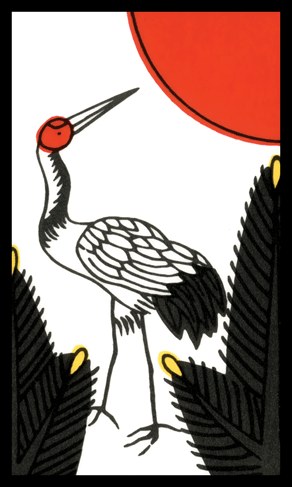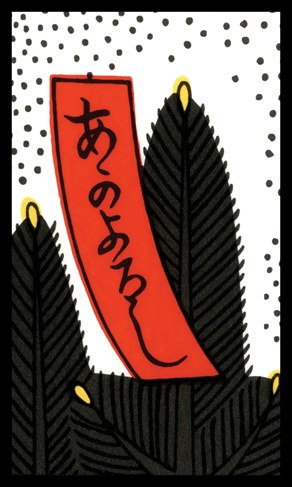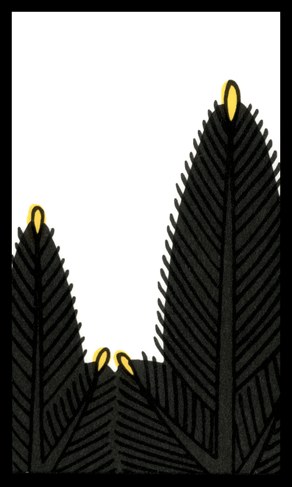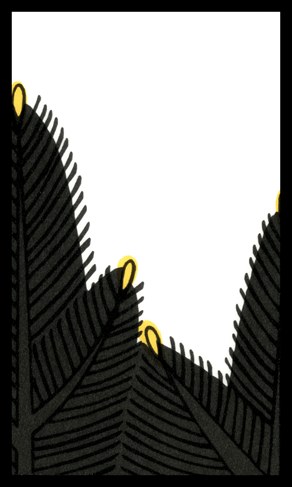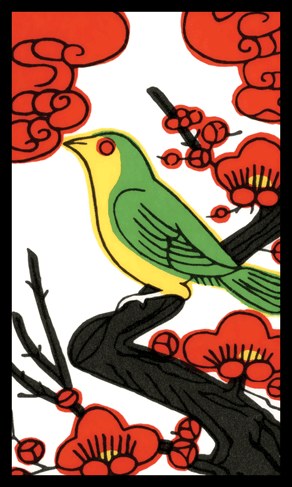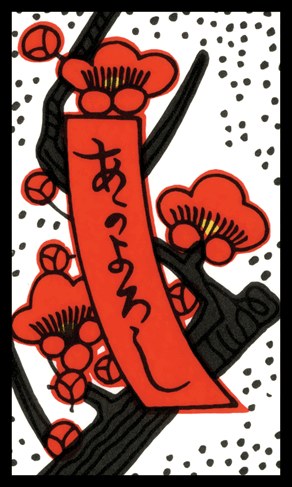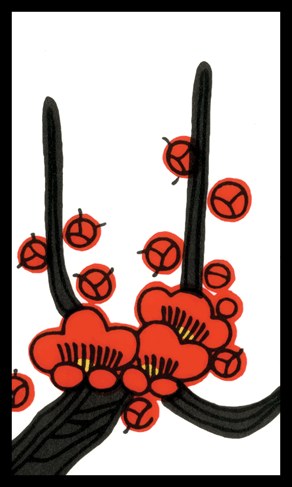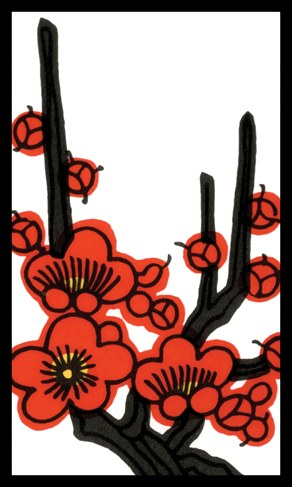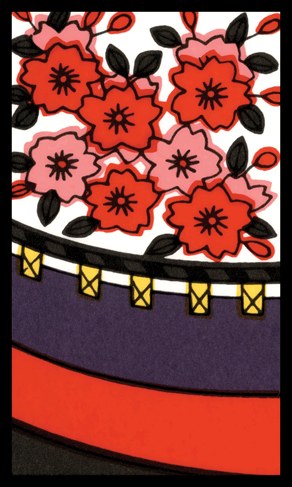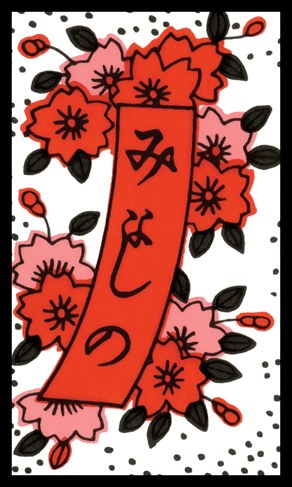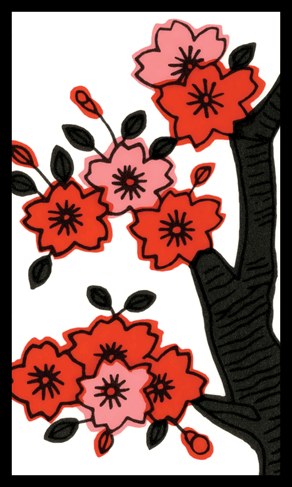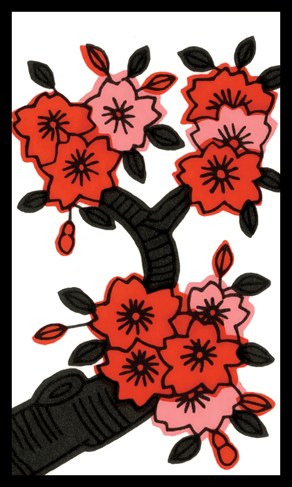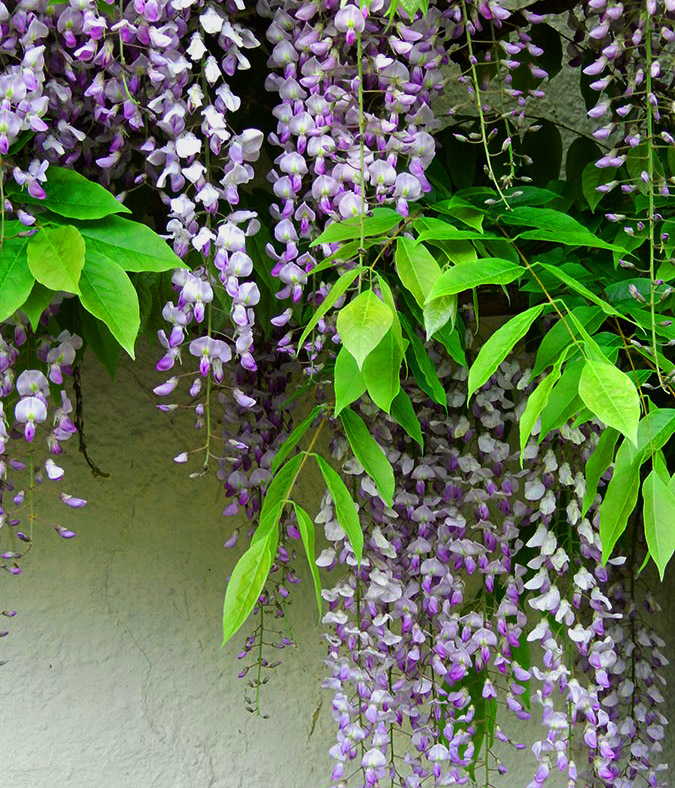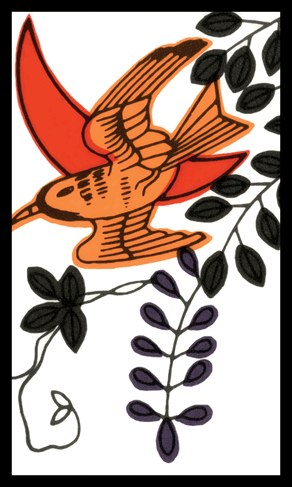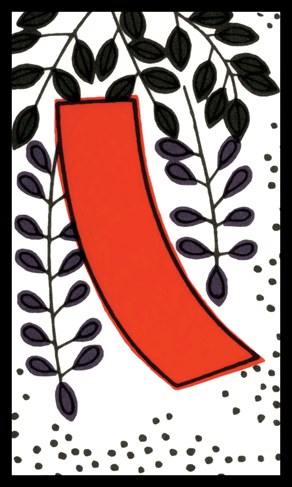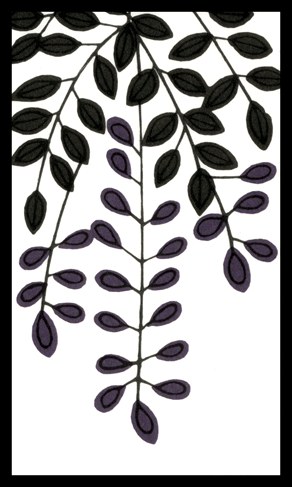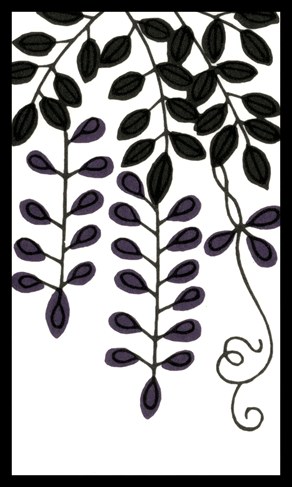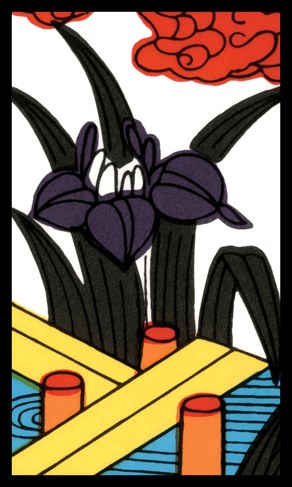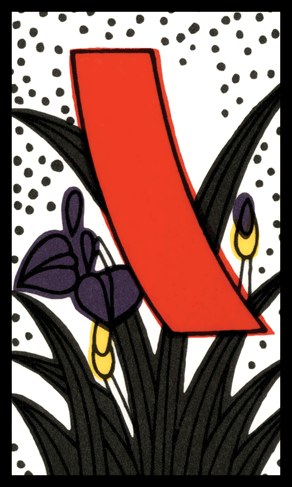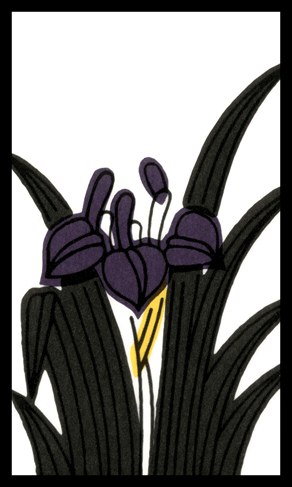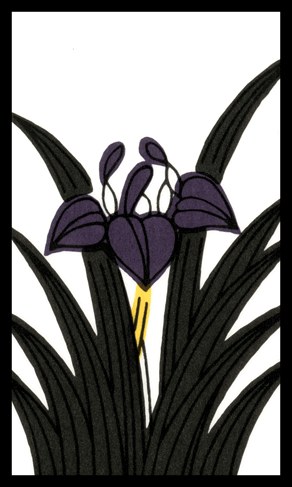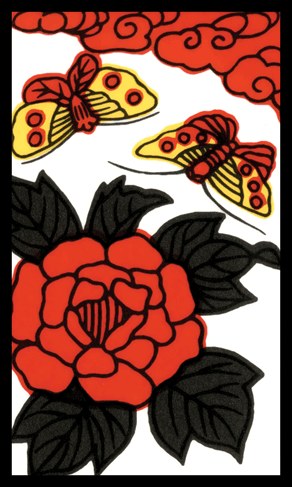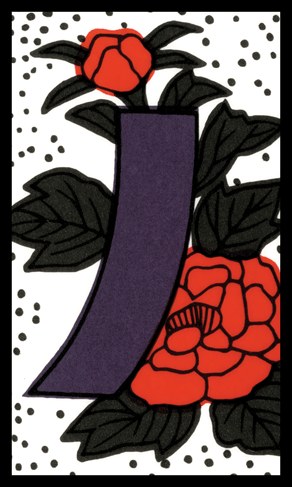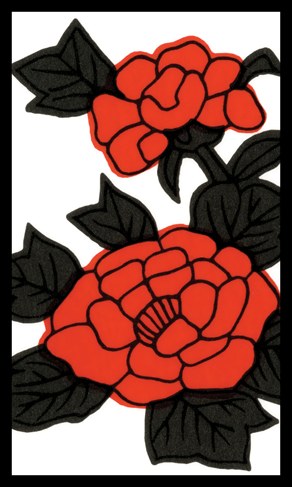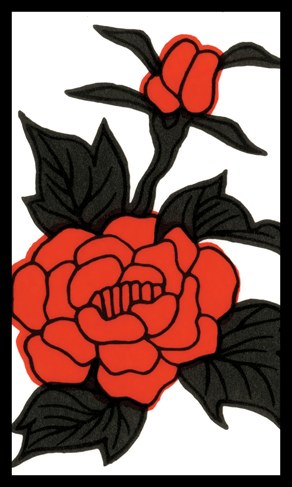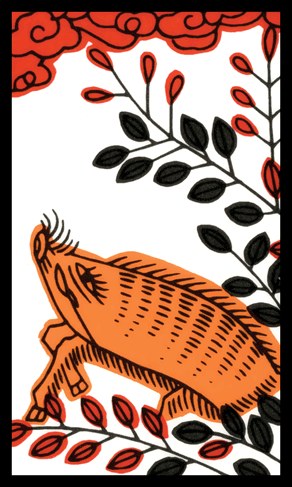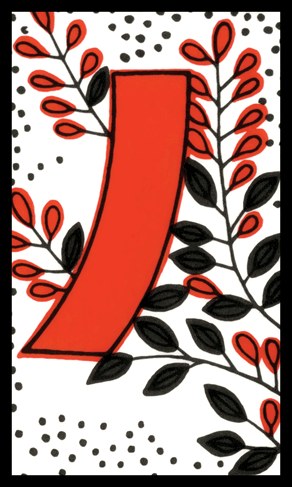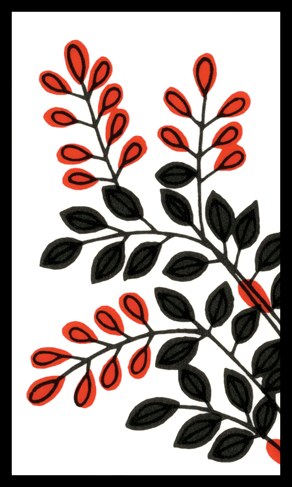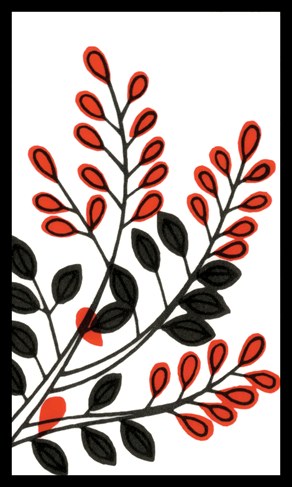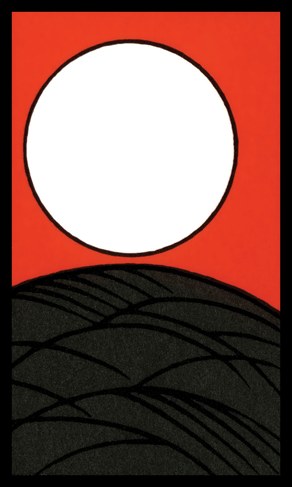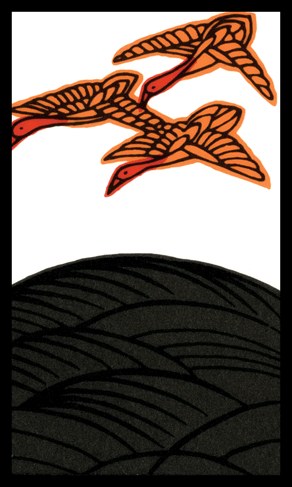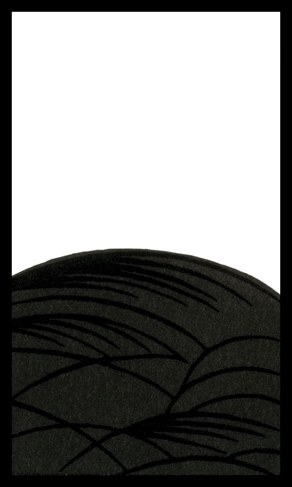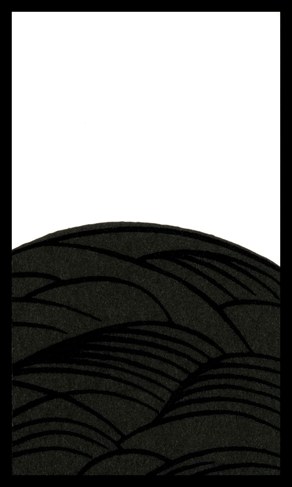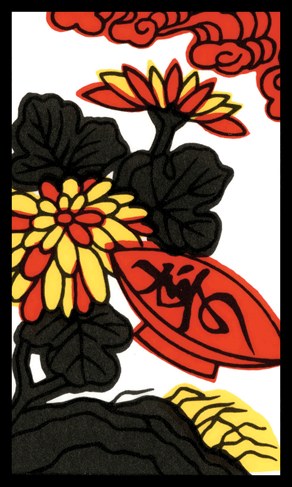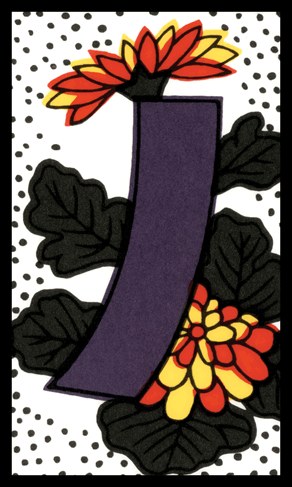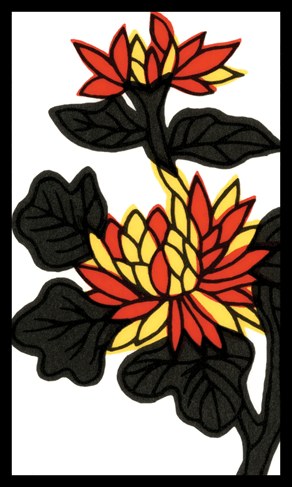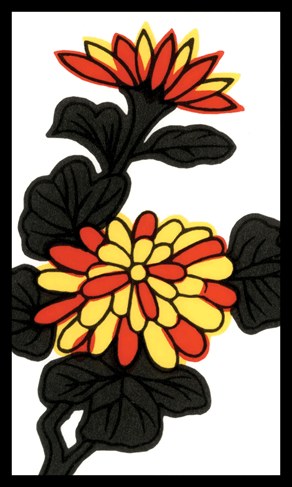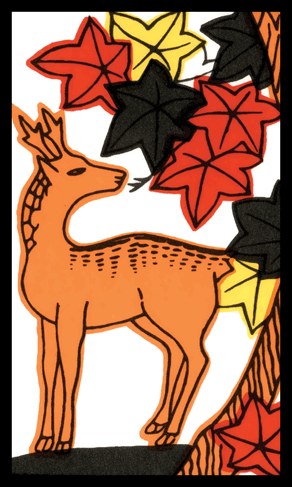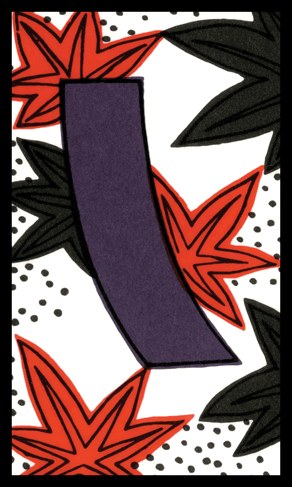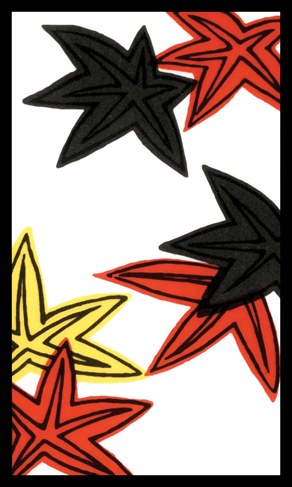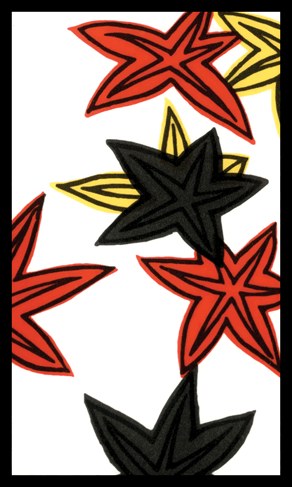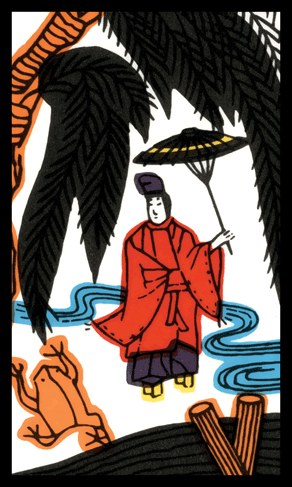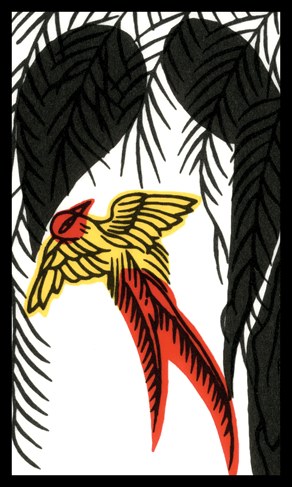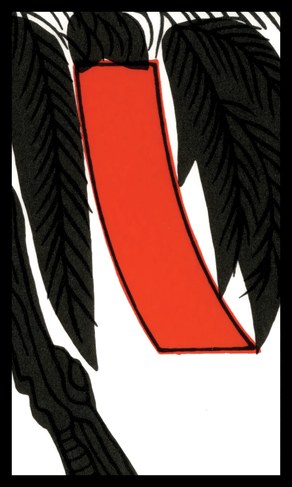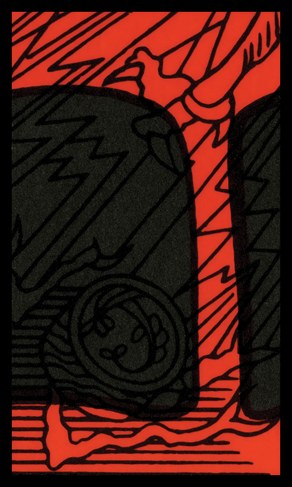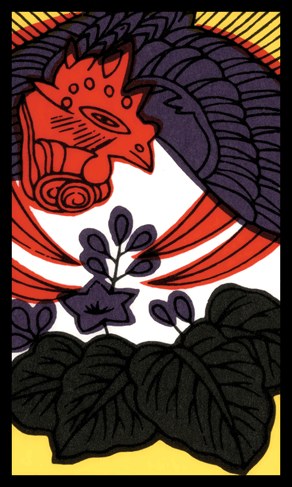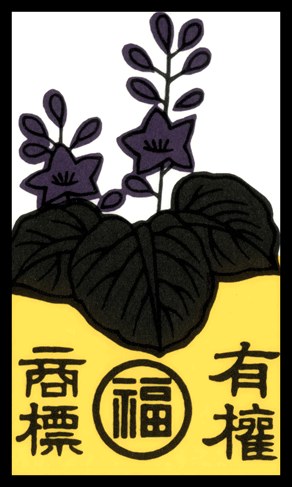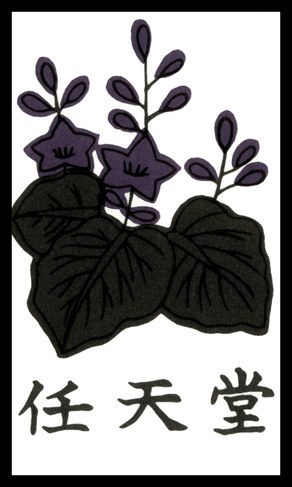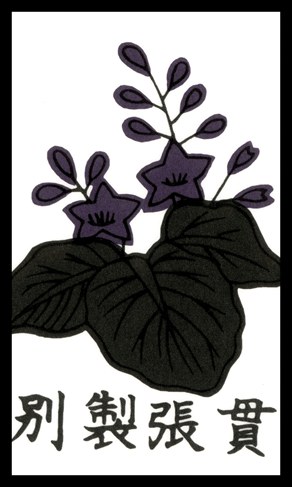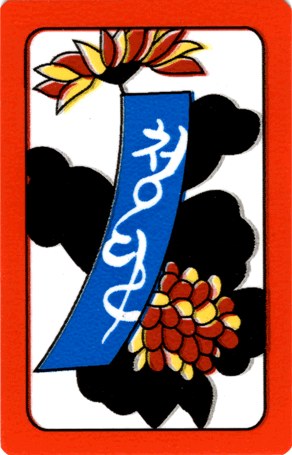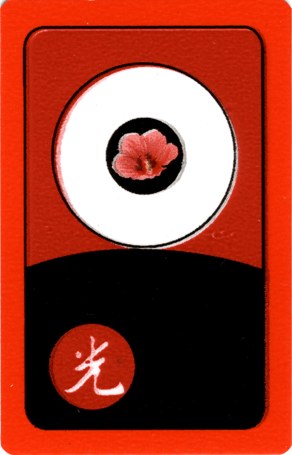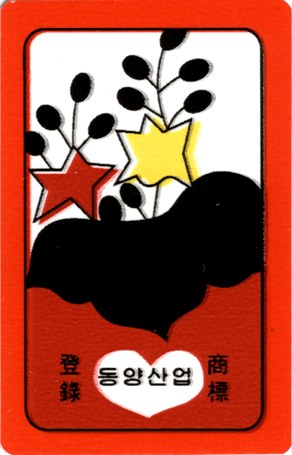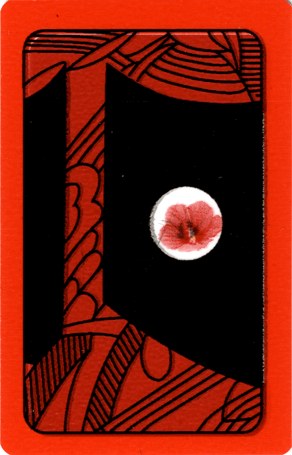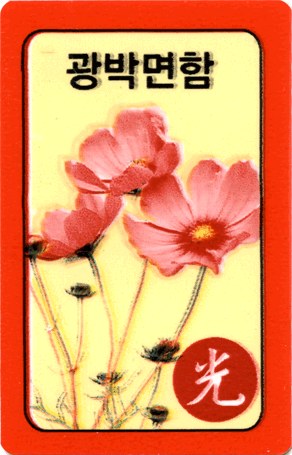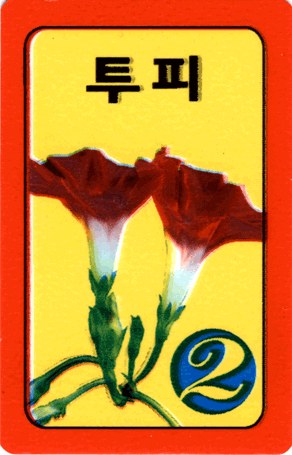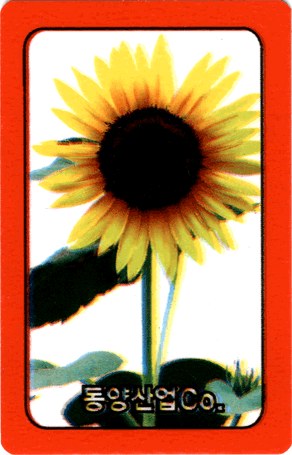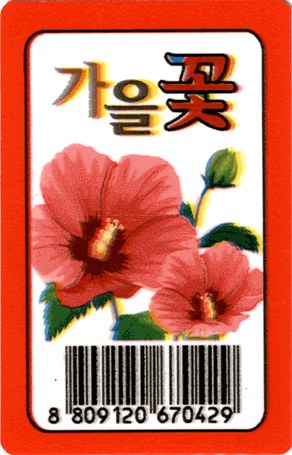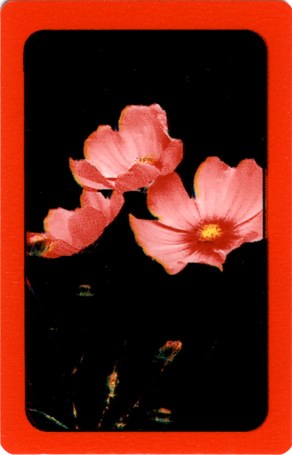Introduction to hanafuda cards
Hanafuda are a deck of traditional playing cards originating in Japan. The deck is used to play a number of games, mostly similar in style, that are also referred to as hanafuda. "Hanafuda" means "flower cards" in Japanese ( 花札 ) and the cards illustrate flowers and animals seen as iconic in Japanese culture.
Though, these days, with the advent of video and computer games, playing hanafuda has certainly declined, the games are still played by older people and as a traditional New Year family activity. Being rumoured to be a favourite game of the Yakuza (Japanese organised crime members) hasn't helped hanafuda's popularity among the more strait-laced.
In modern times, the two most popular games played with the cards in Japan are koi-koi and hana-awase. Meanwhile, a hardcore of cerebral traditionalists play hachi-hachi. Hanafuda is also played in South Korea and in the state of Hawaii. In South Korea, the cards are called hwatu ( 화투 ); one of the most common hwatu games is go-stop (also called godori ). In Hawaii, there is Hawaiian-style koi-koi (sakura, also known as higobana).
What follows is mostly about the cards, their groupings, their imagery. What I am not doing is cataloguing the seemingly endless game variants which seem to exist. It is not an exaggeration to say that almost every ruleset one comes across, even for nominally the same game, is different. I do wonder what chaos the game of chess, for example, would be in with this dissimilitude of play. Anyhow...
The cards themselves are a lot smaller than Western playing cards, being just 33mm wide by 54mm high or thereabouts. Various materials are used in construction, including pasteboard (thin sheets of paper laminated into board), simple cut card, and printed plastic. Please see the section below, Types of cards and where to get your own pack, for more details of construction.
History
In the 1630s under the Tokugawa shogunate, Japan largely closed its doors to the rest of the world, fearing that foreign influences would undermine the country and lead to violent trouble and wars. Nationals were not allowed out, and foreigners – other than for limited trading purposes – were not allowed in. Prior to the start of this 200+ years sakoku ("locked country") isolationist policy, Japan had done extensive trade with Portugal. Amongst other things that Portuguese sailors brought with them were Western playing cards.
Around 1790, a new set of rules called the Kansei Reforms were by introduced by Matsudaira Sadanobu, the shogun's chief counsellor, in an attempt to reverse the financial fortunes and perceived sinking morality of the Tokugawa government. One of the resultant prohibitions included the Portuguese playing cards which, due to the sakoku policy, were by now locked into Japanese culture. To circumvent the ban, decks of cards were created with new designs. The authorities then proceeded to explicitly ban each new type of cards in turn, thus precipitating yet more changes, usually increasingly abstract. An alternative was to overlay an existing design
with chronically thick and clumsy obfuscations.
Previously, at least as early as the beginning of the 1700s,
a graceful and beautiful flower-matching game called hana-awase had appeared (also, confusingly, the name of a modern game played with a regular 48-card hanafuda deck). According to legend, hana-awase had been invented by a priest in the shogunate castle at Edo as a pastime for women and girls of the samurai class. At this point, the pack was 400 cards strong, with four cards in each of 100 (!) suits. By a few decades later (probably during Kyoho era, 1716-36), a variant appeared where the number of suits had been reduced to 12, each of four cards, thus forming the 48-card hanafuda we know today. It seems highly likely that this restructuring was specifically to facilitate the deck's usage for gambling.
The Kansei Reforms were exactly the shot in the arm that hanafuda needed to join the collection of the other "camouflaged" card-gambling games. After all, how could anyone be gambling with pretty cards with no pips and, instead, pictures of flowers?
Sale of the cards was assumed to be banned until 1886, when an entrepreneur, Maeda Kihei, opened a shop in Tokyo with the intention of testing whether the mere sale of the cards (versus gambling with them) was still considered illegal. The authorities took no action and Kihei's store became the first outlet to openly sell hanafuda.
At this point, hanafuda were largely handcrafted deck by deck, and a relatively expensive product. Even so, competition was fierce and dozens of card-makers sprung up. Some actually part-paid their women workers with their own results – 20 packs for each batch of 100 they made. The workers received the worst-finished 20 packs in each batch – a system guaranteed to keep up the manufacturing quality!

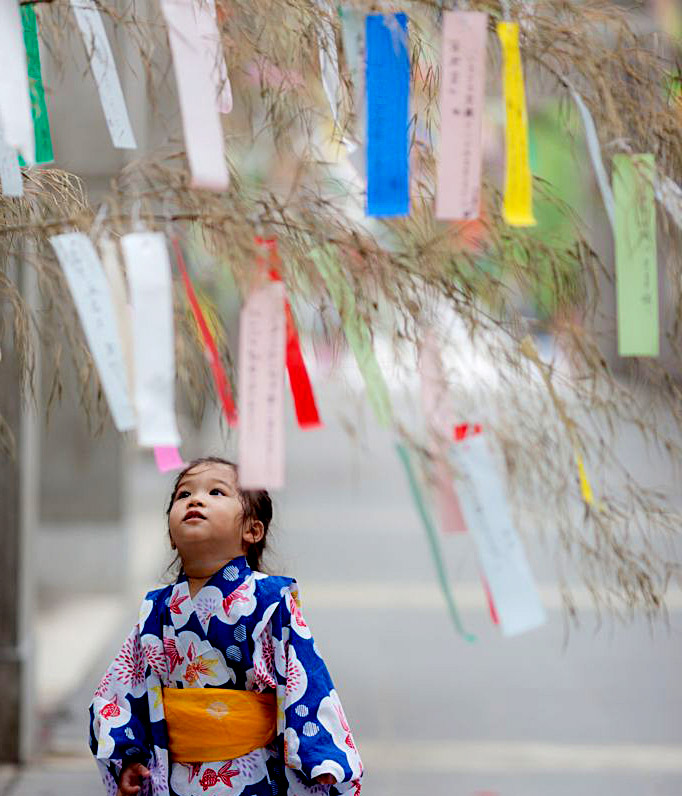
In 1889, as part of this renaissance of hanafuda, Fusajiro Yamauchi founded Nintendo for the purposes of producing and selling cards at an affordable price, and streamlined many of the manufacturing processes. Today, despite its focus on video games, Nintendo still produces hanafuda. Without there being any official authority over hanafuda cards and the games played with them (unlike, say, with chess or poker), Nintendo seems to have become the de facto "keeper of the flame". Despite this, as I said above, there is an annoying lack of sets of "official" rules, even from Nintendo.
Trendy marketing forces inevitably moved into the hanafuda arena and the classic packs were joined by themed decks. Recent times have seen
Super Mario Hanafuda,
Moon Rabbit Hanafuda,
Snoopy Hanafuda,
Star Wars Hanauda,
Hello Kitty Hanafuda,
Ultraman Hanafuda,
Dragon Quest Hanafuda,
Godzilla Hanafuda,
Pokemon Hanafuda,
Spirited Away Hanafuda,
Moomin Hanafuda and
Disney Hanafuda, amongst others. Custom hanafuda decks are a popular choice for
home and small-business art projects and some excellent designs have been produced for the likes of Kickstarter.
Make-up of the deck
[Note: Historically, there have been assorted variations on the hanafuda pattern, most of them region-specific and all of them pretty much dead (apart from a few expensive collectors' reproductions). The information below concerns modern "vanilla" production decks which tend to have settled into a reasonably consistent pattern known as hachihachibana, but a few interesting/odd features of older designs are mentioned en passant – such comments are shown in smaller, grey type, as here, and can be skipped by beginners.]
A hanafuda pack consists of twelve suits, each of four cards, so 48 (=12x4) cards in total. (The standard Western "poker" deck, by contrast, has four suits, each of thirteen cards (4x13=52 cards total)). In hanafuda, each suit corresponds to a month of the year (hence the twelve suits). Each set of four cards indicates their suit/month by showing a drawing of a plant or flower significant in Japan in that month. For example, February is represented by plum blossom as that is when this blossom first flowers. Pictured right (or above-right) is a complete set of cards on a grid, shown with each suit in a separate row (January, top, through December, bottom). Specific commentary on each suit is given further down in this article.
Each of the 48 cards also falls into one of four other categories (aside from their suit/month):
 Brights (hikari)
Brights (hikari) (sometimes called "lights" or "20-point cards").
Click to toggle these cards on the grid. Cards in this category are generally considered the most valuable. In addition to the flower of the month, as outlined above, the card also depicts a design which features the sky or weather (images of clouds and/or raindrops not withstanding). These cards are: a red-crowned crane and sun (from the January suit), the camp curtain (from March), the full moon (August), the rain man (November), and the phoenix (December).
 Animals (tane)
Animals (tane) (sometimes called "seeds" or "10-point cards").
Click to toggle these cards on the grid. These are: a Japanese warbling white-eye (from February), a lesser cuckoo (April), an eight-plank bridge (May), butterflies (June), a Japanese boar (July), geese (August), a sake cup (September), a sika deer (October), and a barn swallow (November). Note that the animal category also sometimes includes non-animals such as the sake cup and eight-plank bridge. Additionally, the cuckoo card also shows a crescent moon which might wrongly lead one to believe the card is part of the bright group (above)! Korean decks solve this bright-versus-animal confusion by adding a special symbol ( 光 ) to the brights. Aside from this, hanafuda players really just have to knuckle down and learn which of these cards belong to which group.
 Ribbons (tanzaku)
Ribbons (tanzaku) (sometimes called "5-point cards").
Click to toggle these cards on the grid. This category of ten cards shows ribbons hanging from the trees/plants. This is a custom, from a festival (originally from China) observed every summer, called
tanabata which celebrates the reunion of two young lovers represented by the stars Altair and Vega. At this time, people write their wishes for the future on strips of coloured paper and hang them on bamboo trees erected in public places such as shopping centres and railway stations (see picture right).
In a modern hanafuda deck, the ribbons can be plain red (of which there are four); plain blue (three); or be red
and include writing/poetry (three). The "blue" ribbons can vary in colour between different designs. Korean decks use a light blue, whereas modern Japanese decks use a purple colour.
[Older decks might show the "blue" ribbons almost as black.] Korean decks also usually add writing to the blue ribbons (this writing can be ignored; unlike the case with the two types of red ribbons, any writing on the blue ribbons doesn't make them behave any differently).
[Just to confuse things further, occasionally in quite old decks, the "plain" red ribbons also carry writing (i.e. all the red ribbons have writing) – if this is the case, just ignore the writing on the April, May, July and November ribbons, and think of them as plain.][Some patterns of hanafuda (usually Japanese, but not usually Korean) show raindrops on the ribbon cards (though never on the November one, for some reason). In some older designs, a sort of cross-hatching may be used to indicate the rain.] Plains/junk/dregs/chaff (kasu)
Plains/junk/dregs/chaff (kasu) (sometimes called "1-point cards").
Click to toggle these cards on the grid. The final set of cards (about half of the total) forms the remainder of the pack. These are cards just showing the flower of the month, with no brights, animals or ribbons. The one exception is the lone plain for November, which features a storm scene that ostensibly doesn't show the flower of the month (willow). Again, this is an oddity which just has to be learned.
You'll see from the grid that most months consist of a bright or an animal, then a ribbon and two plains. However, the months of August, November and December buck this trend and have different combinations.
Most games played with hanafuda are of the fishing type and involve forming a large hand consisting of multiple melds of cards from the categories mentioned above (brights, animals, ribbons and plains). Much gameplay (but by no means all) proceeds vaguely as follow... Players try to win cards from an open selection on the table by matching pairs based on their flowers. A player first tries to match a pair with a card drawn from his private hand against one from the table. If he can match, he wins both cards of the pair. If he cannot match, one of his cards joins those in the pool. The player then repeats the process with his card this time being taken from a central face-down draw pile. So, players win cards by matching on the flowers, but then have to form point-scoring melds (called yaku) from their won cards based on various allowed combinations involving brights, animals, ribbons and plains but (generally) not the flowers.
For those wishing to dig further into the games played with the cards, your best bets are probably the books: Hanafuda and Kabufuda for Beginners by Catherine Rogan, or Hanafuda Games by Jason Johnson. Also of interest might be Hanafuda: The Flower Card Game by Japan Publications, though this book contains some ambiguities and, apparently, even a number of out-and-out mistakes. Rule sets may also be found online (use Google), as may various interactive hanafuda games. Nintendo included koi-koi in Clubhouse Games for their DS and Switch consoles.
Types and makes of hanafuda cards currently available and How to buy
This site
The specifics of the cards are detailed below. Each card can be clicked on to provide a large blow-up.






 In 1889, as part of this renaissance of hanafuda, Fusajiro Yamauchi founded Nintendo for the purposes of producing and selling cards at an affordable price, and streamlined many of the manufacturing processes. Today, despite its focus on video games, Nintendo still produces hanafuda. Without there being any official authority over hanafuda cards and the games played with them (unlike, say, with chess or poker), Nintendo seems to have become the de facto "keeper of the flame". Despite this, as I said above, there is an annoying lack of sets of "official" rules, even from Nintendo.
In 1889, as part of this renaissance of hanafuda, Fusajiro Yamauchi founded Nintendo for the purposes of producing and selling cards at an affordable price, and streamlined many of the manufacturing processes. Today, despite its focus on video games, Nintendo still produces hanafuda. Without there being any official authority over hanafuda cards and the games played with them (unlike, say, with chess or poker), Nintendo seems to have become the de facto "keeper of the flame". Despite this, as I said above, there is an annoying lack of sets of "official" rules, even from Nintendo.




